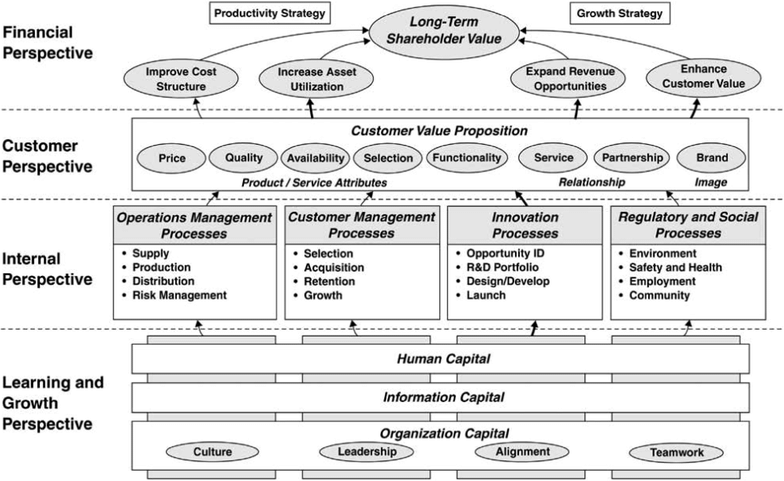This article delves into the history, development, use cases, outputs, benefits, challenges, and real-world applications of the Kaplan & Norton Strategy Map, providing a detailed understanding of its role in strategic management. History and Development of the Kaplan and Norton Strategy MapThe Kaplan and Norton Strategy Map was introduced in the late 1990s as a natural evolution of the Balanced Scorecard, a strategic management tool first developed by Kaplan and Norton in the early 1990s. The Balanced Scorecard was created to address the limitations of traditional financial performance measures, which often failed to capture the full spectrum of factors driving organizational success. Recognising the need for a more holistic approach that integrated both financial and non-financial measures, Kaplan and Norton advanced the framework to include a visual representation of strategic cause-and-effect relationships. As the Balanced Scorecard gained popularity, the Strategy Map was developed to further enhance its utility. It visually depicts the cause-and-effect relationships between strategic objectives across four key perspectives:
This mapping clarifies how individual goals contribute to overall organisational success. Primary Use Cases of the Kaplan and Norton Strategy MapThe Kaplan & Norton Strategy Map is widely used across various strategic management scenarios, including:
Outputs from the Kaplan and Norton Strategy MapThe Strategy Map produces several critical outputs essential for effective strategic management:
Benefits of Using the Kaplan & Norton Strategy MapOrganisations that implement the Strategy Map experience several notable benefits:
Challenges in Implementing the Kaplan & Norton Strategy MapDespite its advantages, organiations may face several challenges when implementing the Strategy Map:
Case Studies: Real-World Applications of the Kaplan & Norton Strategy MapNumerous organizations have leveraged the Strategy Map to drive strategic success. Consider these illustrative examples:
ConclusionThe Kaplan & Norton Strategy Map is a powerful tool that transforms strategic vision into actionable objectives. By visually outlining the cause-and-effect relationships between strategic goals, it enhances clarity, alignment, and communication across the organisation. Although the tool presents challenges, such as complexity and resource demands, its benefits in driving long-term strategic success make it an invaluable asset for modern organisations. In increasingly competitive and dynamic environments, the Kaplan and Norton Strategy Map provides a structured, balanced approach to strategic management, ensuring that both financial and non-financial goals are integrated to achieve sustainable growth and success.
0 Comments
|
AuthorTim Hardwick is a Strategy & Transformation Consultant specialising in Technology Strategy & Enterprise Architecture Archives
March 2025
Categories
All
|



